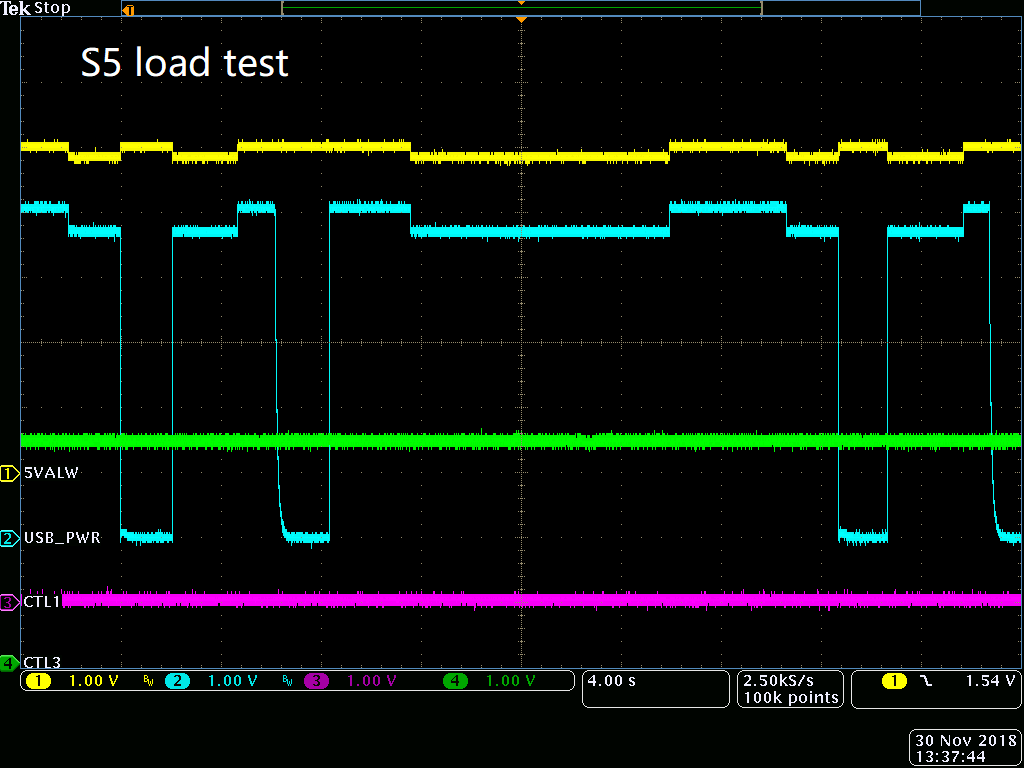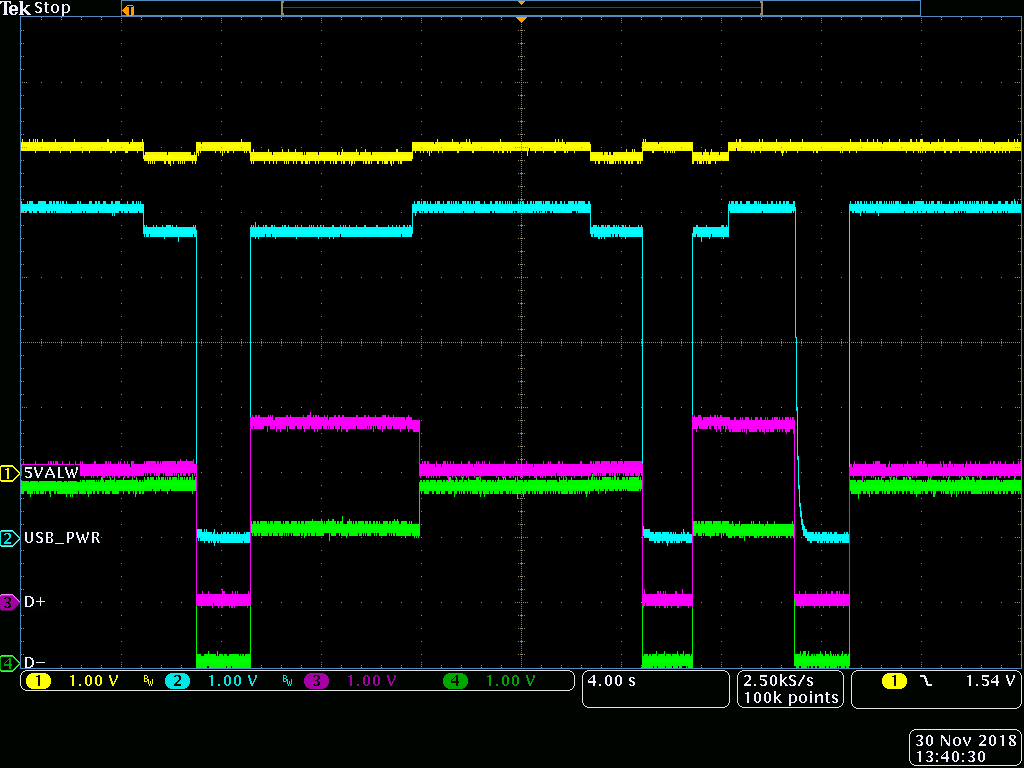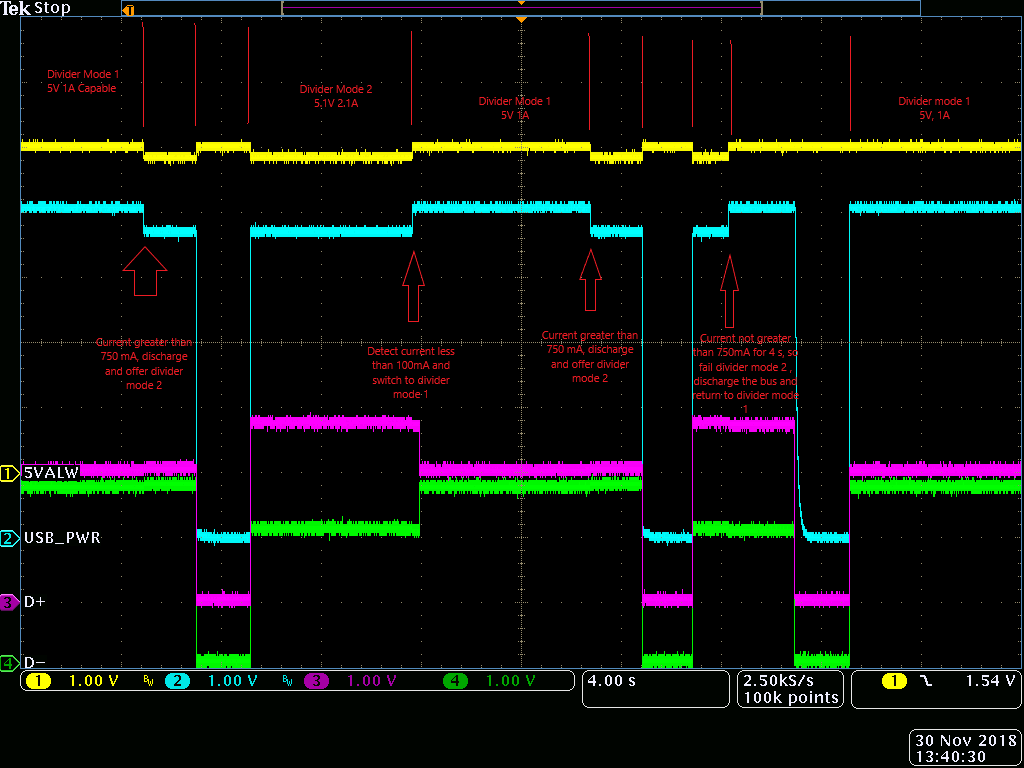Hi Chuck,
The last question went way too long so here I begin a new one with more specific question.
In the case that CTL1, CTL2, CTL3, ILIM_SEL is set to 0111 for S5, and directly drawing 2.1A current from Vbus without D+/D- communication, are the discharges happens in the attached waveforms normal? Could you help to explain the reasons?
Thanks very much for your support.






